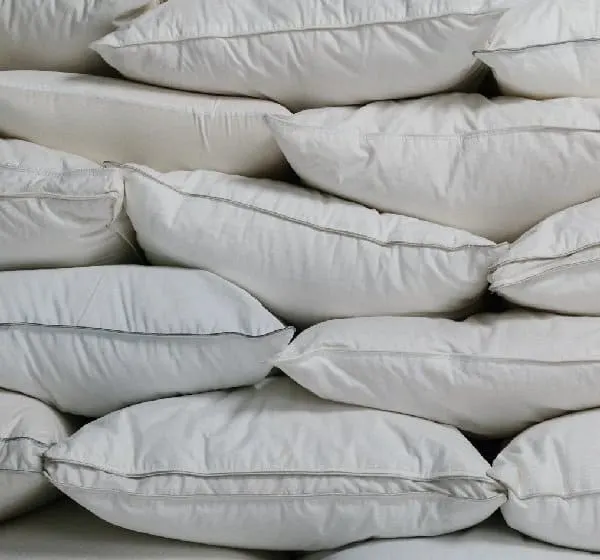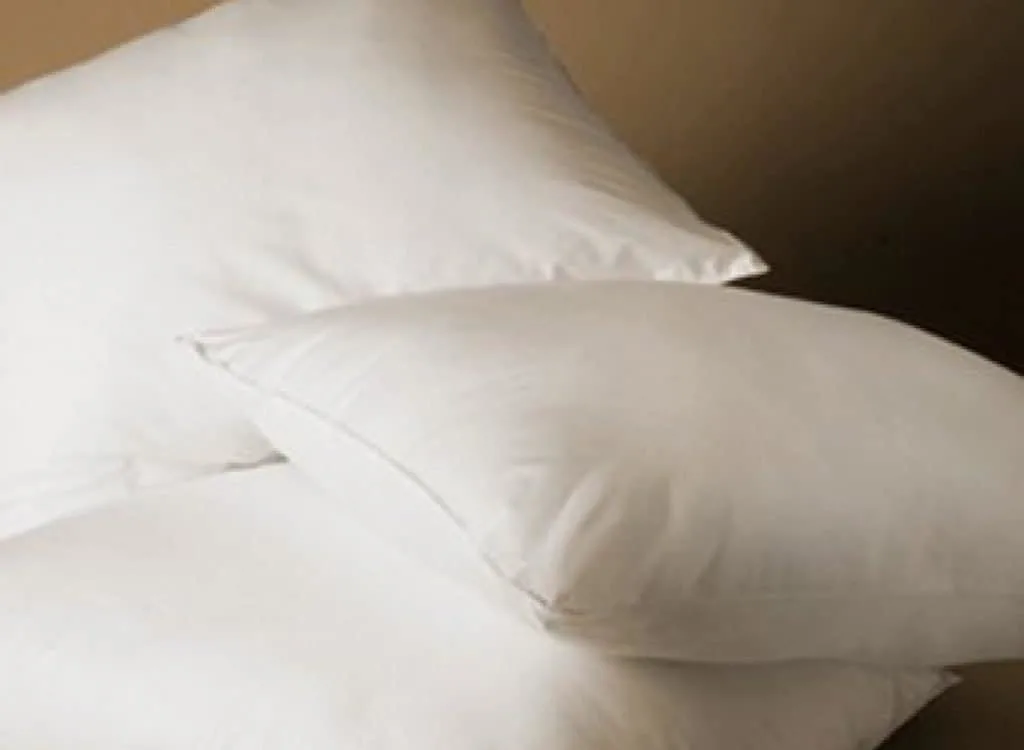Whether it’s for comfort or pain alleviation, a pillow can make a world’s difference in the quality of your sleep. As most people will tell you, sleeping on your back is bad. Sadly, you have little control over your body movements once you fall asleep, so instead of trying to regulate that, why not just adapt your mattress and pillow to your most frequent sleeping position. Remember that proverb: something Mohammed, mountain, etc.? Yes, it can be done with pillows and sleeping positions as well.
Contents
Qualities of a Good Pillow
We’re not going to lie, finding the best pillow for you is probably going to take some time and a lot of experimenting. It’s true that there is a line of advice you can follow, but there’s only so much internet advice can do for you. In the end, you’re still going to have to put your head down and see what fits best.
The main rule that you have to keep in mind when looking for a good pillow is keeping your spine aligned. Of course, I like a fluffy pillow as much as the next person, but if your head and neck are not in the right position when you fall asleep, you’ll eventually end up having a sore neck and probably some shoulder pain to go along with it. When you’re lying down, your upper back and your neck should be in a straight line. This means that your head needs to be fully supported and the pillow needs to be tucked into the neck, while also supporting the shoulders to some extent.
If you happen to fall asleep on a bunch of pillows, your spine will be curved upwards. There will be skin creases on the upper side of your neck. On the other hand, if the pillow is too thin, your spine ends up being curved downwards and the underside of the neck will have creases, especially if you’re a side sleeper.
Sizes
Pillows are available pretty much in all shapes and sizes and manufacturers often let their imagination run wild when they create new pillow models. Even so, there are some industry standards that you might want to consider when you’re out pillow shopping. These standards are indicators that will give you hints on whether the pillow size you’re looking at matches your needs.
Standard
The standard type of pillow is probably the most common type of all because they can easily fit pretty much every bed size. Due to their format, they are perfect for average-sized people. A standard pillow generally measures 20 x 26 inches and should have no trouble fitting inside a Queen-size pillowcase.
Super Standard
This pillow is a bit longer than the standard one, measuring 20 x 28 inches. They are suitable for people who tend to switch sleeping positions a lot during the night since the added length will make sure there’s always some pillow between their heads and the actual mattress. A super standard pillow is great for single and Twin beds and they should fit snugly into standard and Queen pillowcases.
Queen
The Queen pillow is the second most popular size, although it bears a lot of similarities with the standard model. The pillow measures 20 x 30 inches and while it does git in standard sized pillowcases, using a special Queen case allows the pillow to properly expand under the weight of your head.
King
King pillows generally measure 20 x 36 inches and they are preferred by people who sleep on King-sized bed or have larger body types. They are mostly recommended for people who often suffer from joint and muscle pain.
European
These types of pillow have a square shape and measure 26 x 26 inches. They are usually used as decorative pillows, but there are people who like to take advantage of their cushioning and use them as back support, especially on sofas and recliners.
Body
Body pillows are narrower and a lot longer, measuring 20 x 54 inches. They are extremely versatile in their nature and are often used to induce a better sleeping position. They are commonly placed along headboards, but people also use them to relieve pressure points.
Travel
Because a travel pillow needs to be more compact in size, these typically measure 12 x 16 inches. They are very popular among toddlers, aside from being used when actually traveling.
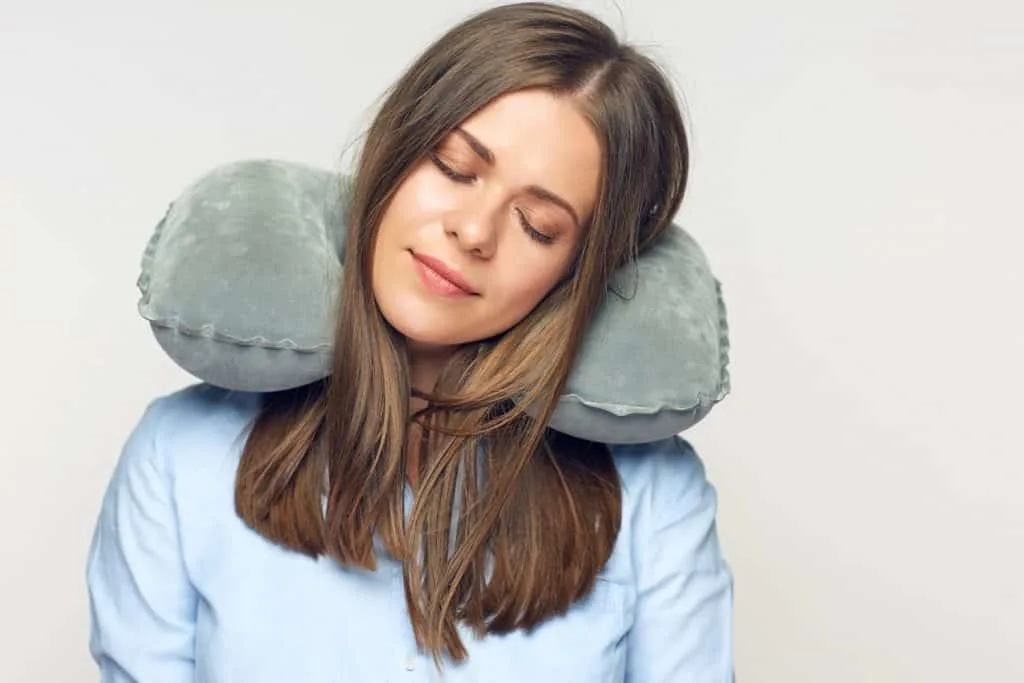
Wedge
This is a very particular type of pillow. It’s best suited for providing body support in a multitude of situations. People normally associate wedge pillows with pain alleviation, because its shape helps elevate different parts of the body, for better support. They can be placed underneath one’s head, to elevate the upper side of the body so people can better read or sit in bed to watch TV. They are also placed at the back side of the knees, to help alleviate leg pain. People also use them to elevate the foot area, which helps improve circulation.
Bolster
Also known as a roll pillow, the bolster is mostly used for decorating the bed, but can also be a sleeping companion for people who like to rest on their sides. They were initially designed to provide leg and neck support. Side sleepers often used a bolster pillow placed right between the knees, for some extra comfort.
Pillow Filling & Inserts
When talking about pillow materials, never confuse the fill with the materials used to make the cover. Whatever is inside a pillow can deeply influence the level of comfort and support are given. It also makes a pillow softer or firmer, cooling or heats retaining.
Feather
In the past, feathers and down were the most common pillow inserts. Duck or goose feathers were used because of their ability to return the pillow to its initial form in the blink of an eye. Today, a lot of pillows are made with micro feathers, because of their curly-like shape which can support your head weight. There are a lot of feather pillows that have a small down percentage, for a more soothing effect.

Down
As you already know, down is the layer found underneath the feathers of fowls. Since it’s very soft, down is used as pillow filling material, especially since it provides a lot of cushioning. However, it does not provide great support on its own, which is why manufacturers often add a bunch of feathers to the mix. Despite the luxurious feel of down & feather pillows, there are people who steer clear of them because they would much rather used pillow that doesn’t imply hurting animals to make them.
Memory Foam
Today, memory foam pillow has experienced an increase in popularity. If you’ve ever owned a memory foam mattress, then you know all about its superior body contouring and provided support. It’s a material that’s very common amongst all types of pillow sizes, from the plushiest to the firmest ones. However, memory foam is known to retain heat, so unless it’s infused with cooling gel or some other cooling technology, chances are you’ll end up sweating, especially if you’re prone to feeling hot during the night.
Alternatively, you can purchase a pillow that’s filled with shredded memory foam. These are increasingly better because the shred can match your sleeping style and your favorite position. This pillow fill is softer and more malleable and it’s sometimes combined with polyfill to make it even softer.
Polyfill
Speaking of polyfill, this is synthetic materials obtained from durable fibers. A polyfill pillow performs very well under pressure, because of its bouncy properties. Its construction and feel can mimic down very well, making polyfill a common choice amongst pillow manufacturer who adds it in their products, making them more affordable.
Kapok
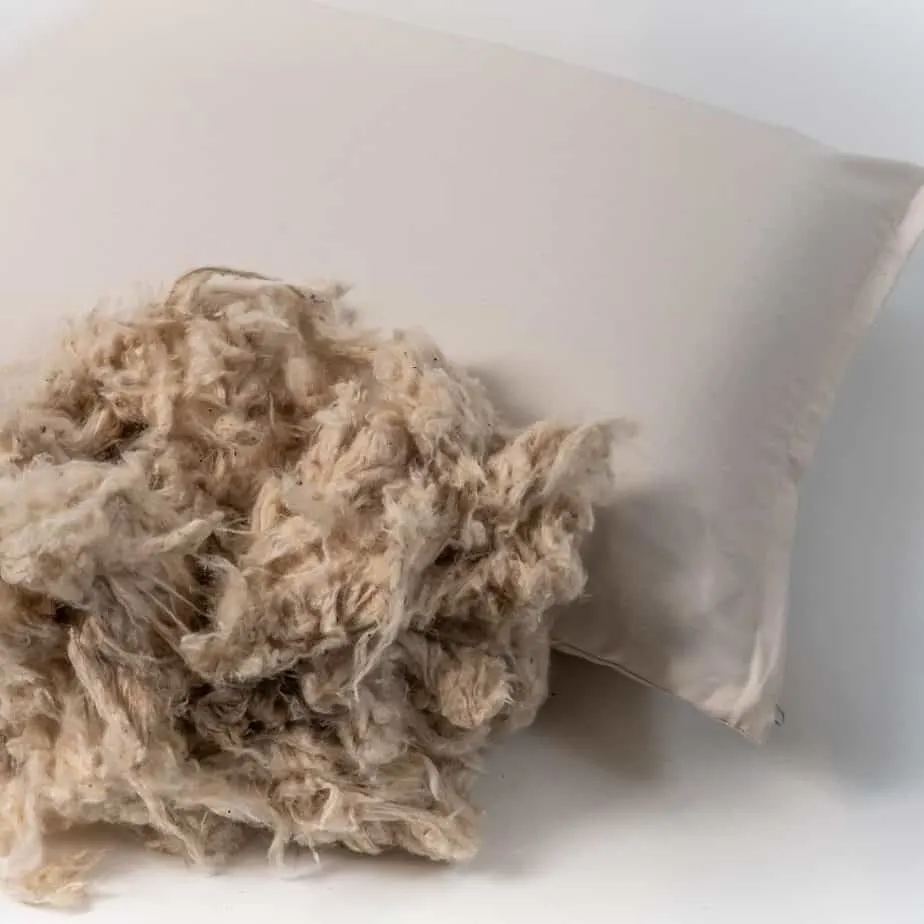
If you’ve ever heard of a Kapok tree, then you already know that this fiber is naturally found inside its mature pods. It’s the softer version of cotton, but it’s more durable than wool, making it a suitable blend candidate to fill comfortable pillows.
Buckwheat
For people who love a hard and natural pillow, there’s always buckwheat to consider. These pillows have a similar feeling to those made with micro-beads but contain no synthetic materials. These pillows are amongst the firmest and most durable ones you’ll ever find.
Micro-beads
You’ll often hear about micro-beads that they are unexpanded polystyrene beads. The reason why they are a popular pillow insert is that they can easily take the shape of your head and provide good neck support. However, they are also very firm, which is why they are a common choice for bolster pillow fillings.
Latex
Latex is a very supportive, bouncy and durable material that’s used on manufacturing some of the most comfortable mattresses, so why wouldn’t it be used in making comfortable sleeping pillows as well? Either regularly-sized or shredded, latex is a more breathable material and provides really great cushioning. Because of its ability to regain its original shape in no time, latex is more durable and will last you longer.
Wool
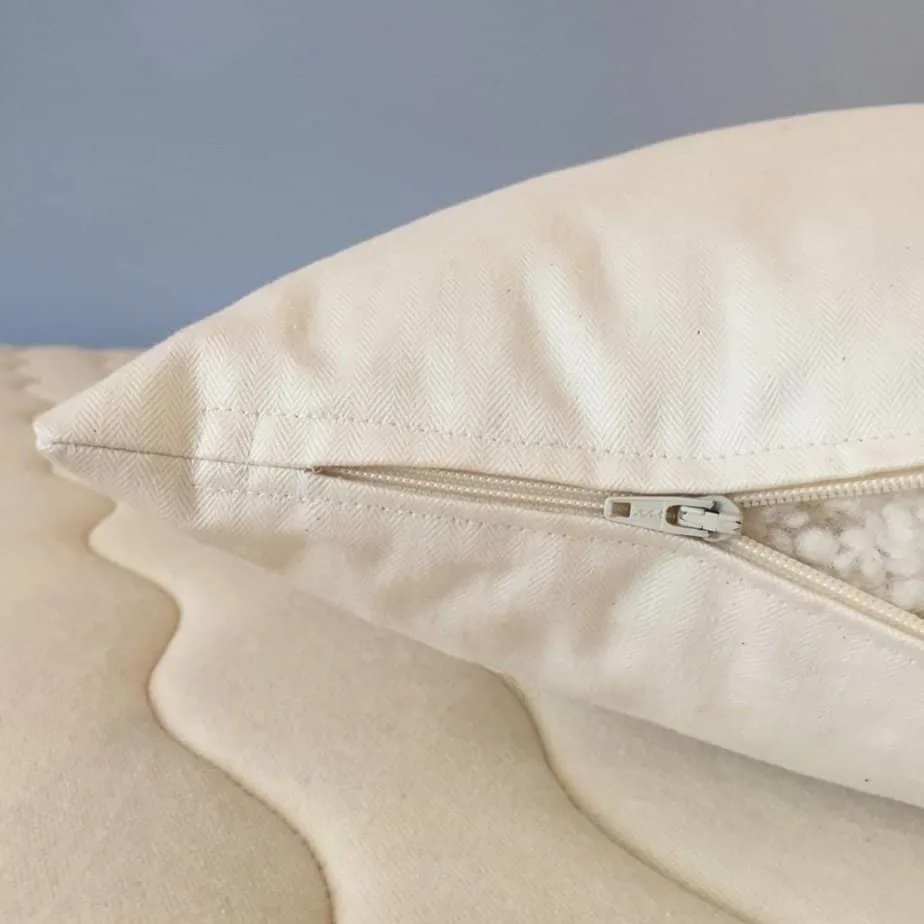
Wool pillows are that common of a choice, mostly because they are costly to make. However, pillows made with wool inserts are natural and provide a higher level of breathability compared to other materials.
Gel
There are also pillows that contain layers of gel or have gen infusions in the fabrics. The gel is commonly used because of its cooling properties, just as it’s used in mattresses. The conduction process will draw heat away from your head and use the gel to emit a cooling sensation
Yay or Nay
Pillow & Sleeping Style
If you would be out right now shopping for a new mattress, you’d focus on finding comfort, support, and contouring. With pillows, you pretty much have to follow the same pattern. A good mattress will make sure that your spine is properly aligned. A good pillow should do the same. A common mistake that people make is choosing a pillow because it looks good. That’s not what you should be looking for. The most important factor is helping you achieve the right sleeping posture.
Back Sleepers
As a lot of physicians will tell you, sleeping on your back is best for your body. This position keeps the spine aligned if your mattress has the right level of firmness and cushioning. People who like to sleep on their back will need a thin pillow, as this keeps their head aligned with the shoulders. If the pillow is way too thin, your head will fall back and put pressure on your neck and the upper side of your body. Alternatively, a pillow that’s too high will put a strain on your lower back area.

Back sleepers are best matches with memory foam pillows (either regular or shredded) or medium-firm latex pillows. Memory foam has this amazing capacity of taking the shape of your body. If you generally feel hot at night, you can opt for a memory foam pillow that has a layer of gel on top or is infused with gel. Shredded foam memory pillows have the benefit of allowing the sleeper to remove some of the fillings, in case the pillow is over-stuffed. In fact, this is one feature that makes shredded foam pillows suitable for all kinds of sleeping positions. By opting for a medium-firm latex pillow, you can benefit from the contouring provided by memory foam and the cooling properties of latex.
Side Sleepers
While it’s not the most recommended sleeping position, it is the most popular one of all. If stomach and back sleepers can use the same type of mattress and similar pillows, with side sleepers it’s a whole different story. Sleeping on the side puts a strain on your entire column, which means that you may need some help in keeping it aligned. The best pillow for side sleepers should be thick enough as to make sure the head is held even between the shoulders. It’s also important for the pillow to fill the gap between your head and shoulders, so there won’t be any pressure on the neck.
Amongst the best pillows for side sleepers are those made from firm memory foam. Since the material already has a reputation for providing neck and shoulder support, you’re almost guaranteed to get the proper spinal alignment. You need a memory pillow that’s firm because the extra loft will prevent your head from collapsing into your shoulder. Another good choice is the latex foam pillow combo. Sometimes, memory foam can give you that sinking in feeling, so if you want to get rid of it, latex foam is the next best thing. Due to its properties, it can aid side sleeper in keeping a straight neck and it can prevent the shoulder from sinking into the mattress too much.
Stomach Sleepers
About 16% of all sleepers prefer to lie face down on the mattress. While this is the least recommended sleeping position, it’s also more common than back-sleeping. Stomach sleepers will often force their spine to bend inwards towards the mattress. Even more, because you can’t exactly lie face down because you wouldn’t be able to breathe if you did, you will have to turn your head either left or right, at basically a ninety degrees angle. This puts a tremendous amount of strain on your neck. Stomach sleepers often wake up with neck pain because they end up sleeping this way.

A good pillow in this situation should be thin enough as to prevent your head from being raised too much over your shoulders. Down pillows should work just fine because they are super soft. The important thing to consider here is the loft because you want your head as close to the mattress as possible and down pillows can be flattened to reach the desired thickness. Shredded foam memory pillows can also do the trick. Because you can remove as much filling as you want, you should be able to customize the thickness of the thickness of the pillow, but still, enjoy its softness.
Bottom Line
Your sleeping position is something you can’t really control since you drift away to dreamland and become unaware of how your body moves. If you know you’re a fussy sleeper, try to opt for malleable pillows, that can bend and turn as much as needed to make sure that your neck and spine are in the right position. Since the most common position is lying on the side, a lot of doctors recommend using a pillow between the thighs. When we sleep on the side, our upper legs is left without support, which causes our top knee and thigh to slide off the other leg, causing an undesired rotation of your lower spine.
Finding the right pillow for your sleeping habits requires that you first understand exactly what your sleeping habits are. You may often wake up sleeping on the side, but maybe you spend most of your night sleeping on the back. Or maybe you are a combination sleeper and don’t even have a preferred sleeping position. Once you understand how you sleep, you can understand which are the areas of your body that need support. After knowing that, you can analyze the different types of pillows and see which one of the better suits your needs. And don’t be mad or worried if the first pillow you buy isn’t the right one: most people never get it right the first time. Experiment and thank Heavens for return policies!


